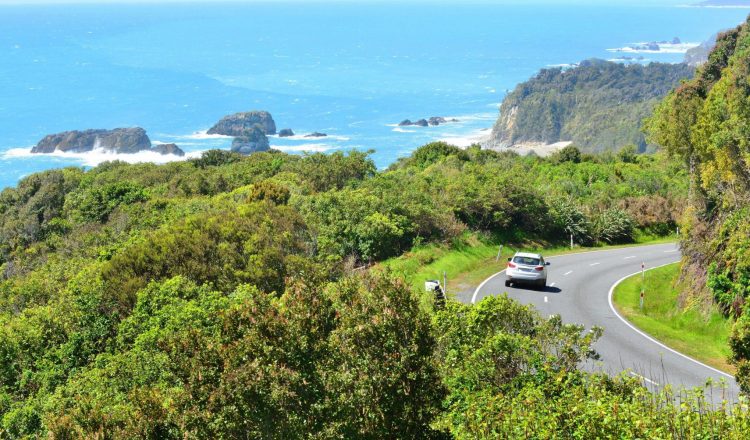冬季の運転
以下の冬季の運転に関するヒントは、凍結した道路、濡れた道路、雪道を運転する際に、状況に応じた準備と運転をするのに役立ちます。
何を考慮すればいいですか?
- 冬季の安全運転のために、旅の計画を立てましょう。
- 出発前に、交通機関や旅行に関する最新情報をジャーニープランナー(外部リンク)または0800 44 44 49までお問い合わせください。
- どこに行くのか、どのようなルートで行くのかを考えましょう。利便性よりも安全性を重視してください。
- 特に天候が悪い場合は、本当に移動する必要があるのかを検討してください。
- 常に天気予報をチェックしてください。
天候が悪く、どうしても移動を延期できない場合は、時間に余裕を持って行動しましょう。視界が良く、道路上に氷や雪がある可能性が低い昼間や日中に運転することを計画してください。危険が急増する夜間の運転は避けましょう。
長距離を移動する場合は、十分な休息をとり、どこで休憩するかを計画してください。可能であれば運転を分担するか、2時間ごとに休憩を取るようにしましょう。
高山や高地の高速道路を走行する場合は、状況に応じた服装をし、防寒着を携行し、立ち往生した場合に備えて車内にサバイバルキットを置いておきましょう。車が走行可能な状態であることを確認し、別のルートに変更された場合に備えて、ガソリンを最低でも半分は車に積んでおきましょう。
雪に備えて、使い方と装着方法を知っているタイヤチェーンを携帯しましょう。チェーンの装着方法の動画はこちらです(外部リンク)
道路ではどうすればいいですか?
- 濡れた路面や凍結した路面では、一瞬のうちにコントロールを失います。
- 急ブレーキや急旋回など、横滑りするような動作は避けましょう。
- スムーズに加速し、穏やかにブレーキをかけましょう。
- 上り坂ではギアを一番高くし、下り坂ではギアを一番低くしてください。
- 横滑り防止装置の付いていない車の場合、横滑りを防ぐために、ブレーキペダルを長く強く踏むのではなく、短時間で一気に踏み込みます。
- 滑りやすい道路では停止するのに時間がかかるので、安全な車間距離をとって運転しましょう。冬場、特に悪天候時には、2秒ルールを倍にして、後続車との間に安全な距離を確保してください。
- 霧や雨、雪の中を走行するときは、安全性を高めるためにライトを落として運転しましょう。
4WDの方が安全ですか?
4WDは前方への牽引力が強く、グリップ力も高いのですが、悪天候の中での運転、状況に応じた運転、上記の冬の運転のコツを守ることは、どの車にも当てはまります。
氷や雪の場合は?
- 高い堤防や高い樹木による日陰では、道路の凍結が早く、日中に氷が解けないこともあるので注意が必要です。
- また、橋は他の路面に比べて滑りやすい状態が長く続くことがありますので、橋を渡るときは速度を落としてください。
- 霜は明け方の方が降りているので、それに備えておきましょう。朝6時には霜が降りていなくても、1〜2時間後には霜が降りている可能性があります。
作業車に注意
高速道路上には、道路を維持するための冬季作業車両が走っている可能性があります。これらの車両に遭遇した場合は、安全な距離を保ち、指示がない限り追い越さないようにしてください。
冬季作業スタッフは、閉鎖の発生や状況の変化に応じて、高速道路の状況を常に更新しています。彼らは最新の情報とその地域に関する経験豊富な知識を持っていますので、常に彼らの指示やアドバイスに従ってください。
旅行中に情報を得ることはできますか?
全国の道路脇に設置されている現在の状況については、ドライバーに最新の状況を警告を発しています。
これは、道路閉鎖、氷、雪、その他の関連情報を警告するものです。これらの標識のメッセージは遠隔操作で変更され、規制がないときは空白になります。
また、多くのラジオ放送でも道路状況の速報を行っていますので、お近くの放送局で最新情報をお聞きください。
道路に散布される氷結防止剤
凍った状態での走行を助けるために、一部の道路に砂やCMAと呼ばれる氷結防止剤が散布または噴霧されます。 これは通常の速度で走行できることを保証するものではありませんので、速度を落として走行してください。
高速道路に砂利が敷かれている場合は、その効果を最大限に引き出すために、車の通った跡をなぞるのではなく、可能な限りその上を走行してください。
状況に合わせて運転することを忘れないでください。氷や雪が発生するスピードが速いために、砂やCMAがまだ散布されていない場合があります。
常に覚えておくこと
- 状況に合わせて運転してください。
- 霜が降りていたり、雨が降っていたりする日は、車間距離を長めにとりましょう。
- 遅延に備えて、状況に応じた服装、暖かい毛布、ペットボトルの水、非常食などを車内に用意しておきましょう。
- 緊急時の道路閉鎖の標識や障壁に従ってください。
- 道路警備隊や警察官の指示に従ってください。
- 凍結した状態での牽引は避けてください。
- 道路の閉鎖や制限は、あなたのような道路利用者や、道路で働くスタッフの安全のために行われています。閉鎖された高速道路を走行することは法律違反です。閉鎖や制限を無視する場合は、あなた自身の責任で行うことになり、保険も無効になります。
困ったときは
- 緊急時には111番に電話してください。
- 機械的な故障の場合は、故障サービス会社にお問い合わせください。
- ステート・ハイウェイ(国道)の現在の道路状況を報告・確認したい場合は、
- 0800 4 HIGHWAYS (0800 44 44 49)までご連絡ください。
- www.journeys.nzta.govt.nz(外部リンク)をご確認ください。
- 万が一、立ち往生してしまった場合は、助けが来るまで車から離れず、暖をとってください。
- 事故に巻き込まれた場合は、たとえ誰も怪我をしていなくても、警察に伝えてください。このような情報は、必要に応じて道路を改善するのに役立ちます。

















































